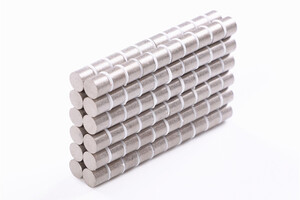The Issues Will Be Caused When Assemble The Neodymium Disc Magnet
Body
When manufacturing magnetic assemblies, there is additional risk involved when utilizing magnetized magnets due to the nature of the components. There is risk to both the assembly itself and the technician. As experts in magnetic assemblies and their fabrication, Zhijiang minimizes these risks to safely and effectively deliver your magnetic assemblies.
Learn more about this process, and why you should assemble before you magnetize.
Risks Associated with Assembling Neodymium Disc Magnet
Assembling magnetized magnets carries additional risk due to the effects of magnetization on the assembly components. A detailed description of such risks includes the following.
Risk to Assembly
There is threat to both the conformance and the performance of the assembly. Magnets can easily chip or break, creating foreign object debris (FOD) during assembly and reducing the magnetic volume, and therefore net magnetic field, of the final product. These small particulates can be attracted to the magnetized magnets, causing dimensional risk because they can wedge between mating surfaces, thereby offsetting dimensions.
These issues could also jeopardize the strength of the magnetic assembly. Some magnetic alloys do not achieve full power unless they are magnetized in the sub-assembly. These include Alnico, which is a magnetic alloy with a brittle composition, and ceramic (Ferrite) magnets, which are a manufactured metallic oxide.
Assembling with strong magnets can also damage other assembly components, whether through a crushing action or via dents after collisions. Magnetized magnets can also result in decreased corrosion resistance by damaging the conformal coating or plating layer of the magnet.
Risk to Technicians
In addition to the risks to the assembly itself, there are dangers present for the technician performing the assembly. Assembling strong magnets can cause injury due to pinching hazards present, and the possibility of eye injury due to flying chips after a strong magnet collides with another object.
Cost Risk
Finally, there is an added cost to assembling magnetized magnets because the process involves the additional requirement of fixturing. Fixturing is necessary to contain and locate the magnetized magnets, as well as to potentially “de-stack” the magnetized magnets when necessary. Training and space are also required when constructing magnetized assemblies. It is important to properly train technicians in order to avoid injuries detailed above. Lastly, it is necessary to keep magnetized components clear of each other, increasing the staging cost.
All of these risks can be surmounted by magnetizing the magnet only after integration into the assembly.
Un-magnetizing magnets in assemblies
It is often beneficial to un-magnetize the magnets before integration into assemblies. This applies to subassemblies as well. Un-magnetizing the magnets reduces foreign object debris on the magnet, and reduces risk to technicians, as they are only handling safe, unmagnetized magnets. Another key benefit is the reduction of magnet collisions resulting in damage. Lastly, performing the post-assembly machining is more efficient on un-magnetized parts, as they are easier to clean and machine precisely.
Grinding and machining magnet alloys with conventional metals
It is important to understand the challenges present in grinding and machining assemblies. Magnet alloys are often combined with conventional metals as opposed to conventional metal alloys. The magnetic alloy can be hard and brittle in comparison, making them vulnerable to damage. Therefore, the grinding methods and wheels that are suitable for magnetic alloys are seldom ideal for conventional metals and vice versa. This is because the grinding wheels can “load up” with the softer conventional metals and damage the magnet alloy, which are subject to cracking and breaking when machined by conventional means.
Your Magnetic Assembly Experts
There is a range of risk present in machining and manufacturing magnet assemblies. Our engineering specialists have years of experience with these concerns and have the capability to create assemblies with de-magnetized magnets. Contact us to learn more about our magnetic assembly capabilities as well as our custom magnetic solutions.
Do not hesitate to contact us,as an professional N52 Rare Earth Magnets manufacturer, We will offer the best service for every customer.












Comments